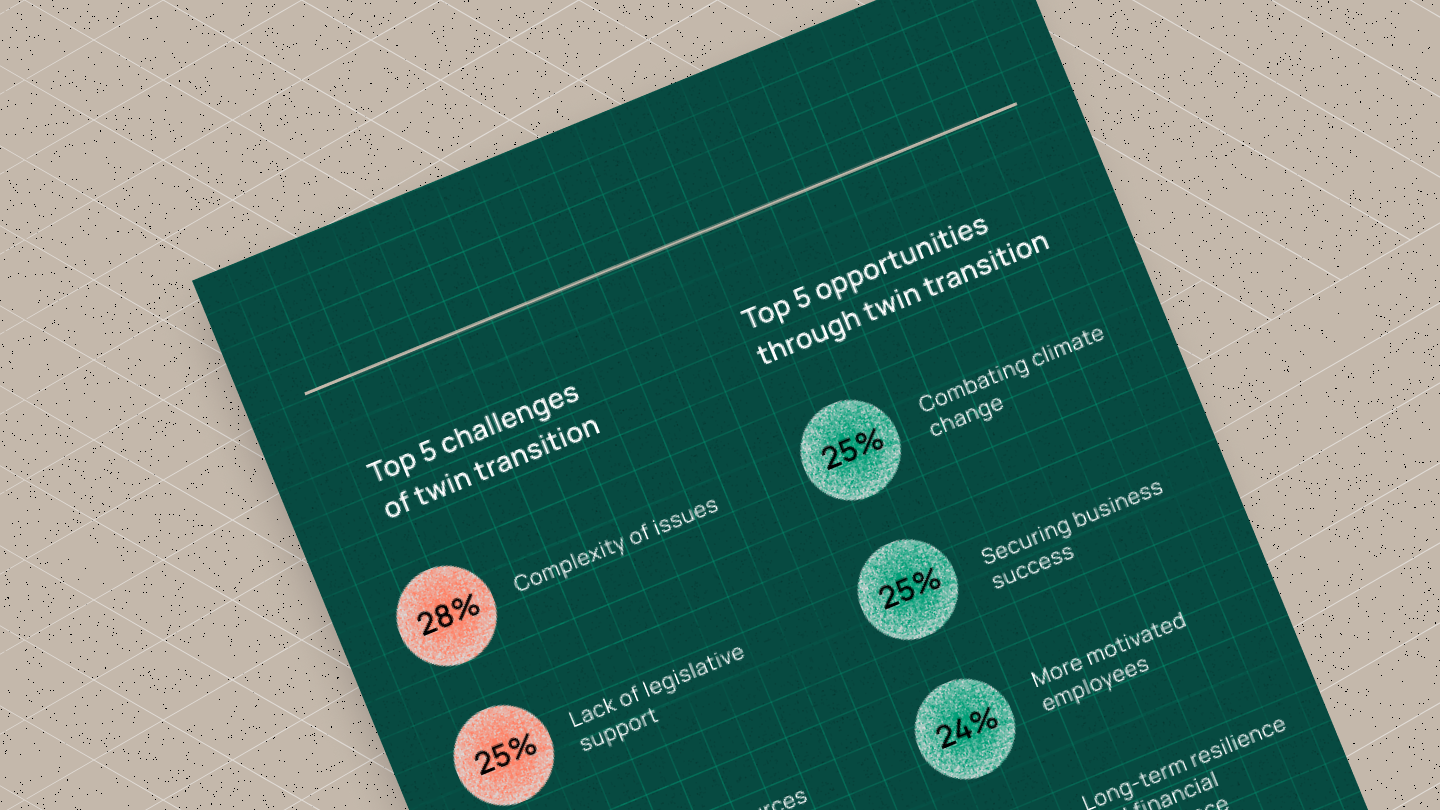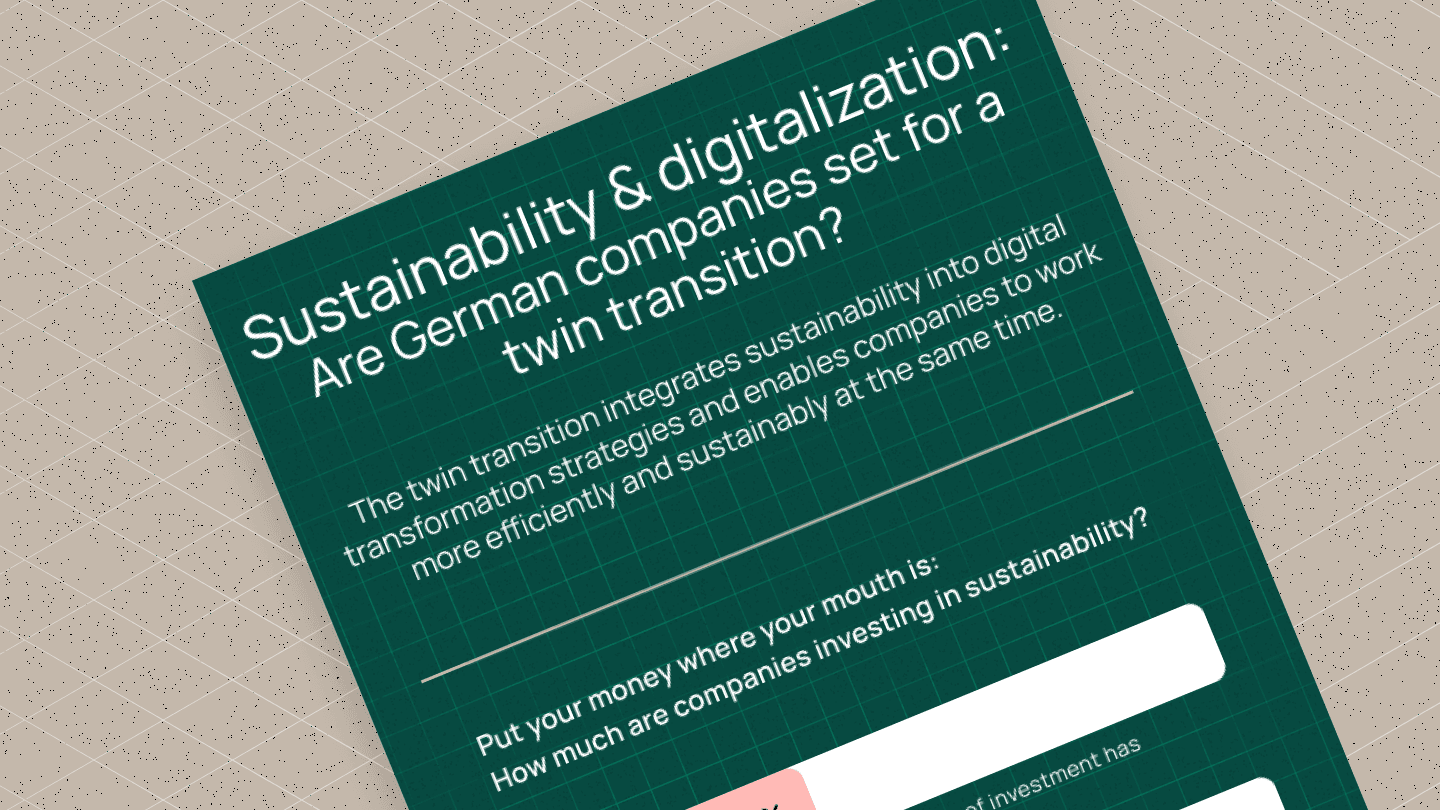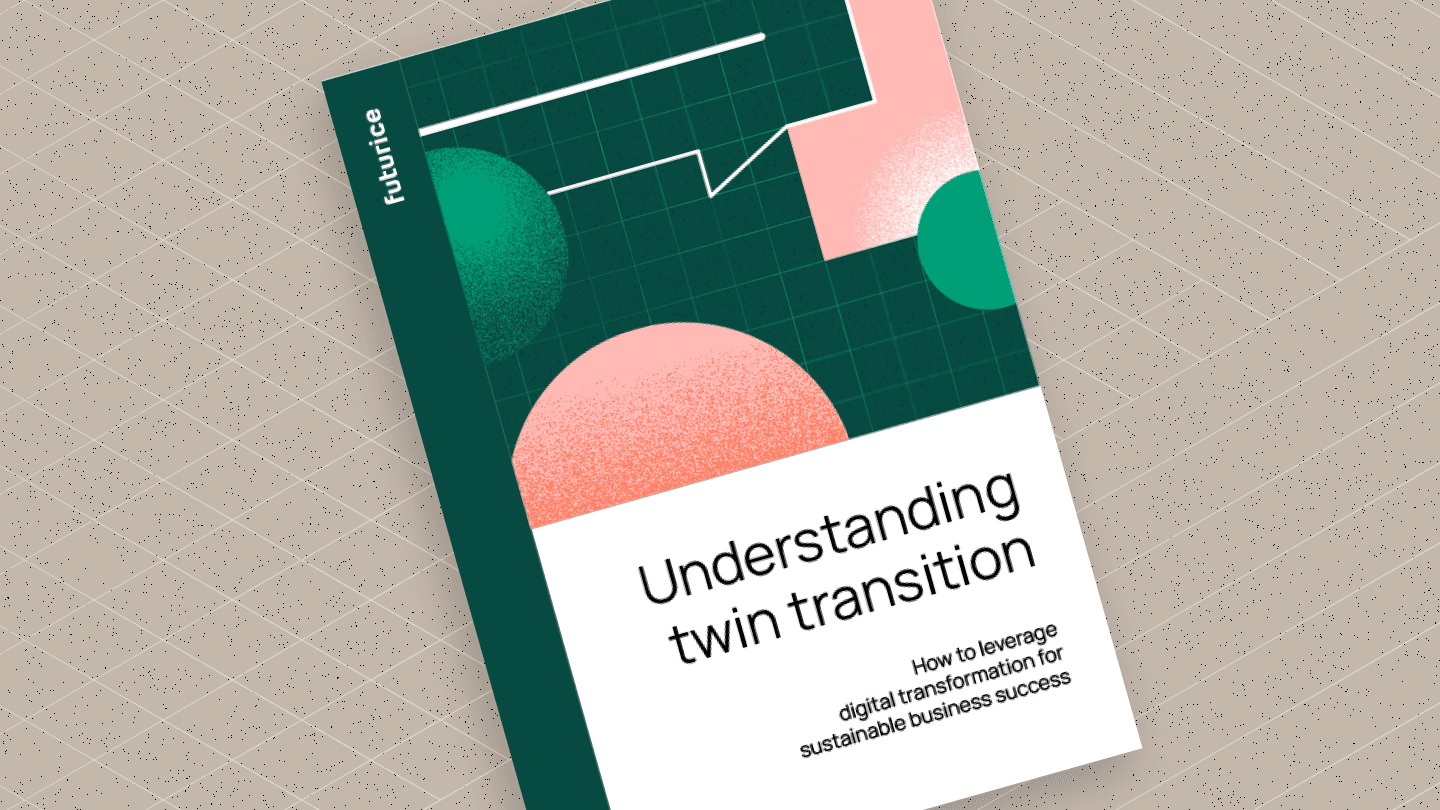What are the biggest challenges and opportunities in twin transition?
What are the challenges and opportunities that leaders associate with twin transition? What changes are needed in order to successfully implement it? Our survey of 250 executives from the automotive, healthcare and IT industries in Germany provided some valuable insights into the questions and concerns that companies are facing when considering twin transition.

To stay ahead of rapid changes in a volatile and complex world, companies have to act and adapt quickly. This applies especially to topics like digitalization and sustainability – two aspects that will largely define how future-proof and competitive companies are in the future.
In a recent survey, the market research institute YouGov, commissioned by Futurice, asked more than 250 executives from the automotive, healthcare and IT industries about the status of sustainability and digitalization strategies in their companies. Our interest in these areas is linked to the recent emergence of twin transition, an approach where organizations combine their digital transformation and sustainability efforts to benefit from their mutual synergies.
The results of our survey are not particularly positive – among other things, they show that for the vast majority (82%), investments in sustainability have stagnated or declined in recent years, and that almost half (42%) have not yet realized that synergies can be created between the areas of sustainability and digitalization.
When it comes to succeeding in twin transition, one third of all respondents indicated leadership as the most important factor. Leaders need a clear vision that they can communicate to the workforce and a goal to work towards together.
But what challenges and opportunities do leaders see in twin transition? And what changes do they consider crucial in order to successfully implement twin transition? In this article, I’ll dig deeper into the results of our survey. If you haven’t had the chance to read the previous article in this series, you can find it here.
Complexity and lack of resources rank among main challenges
As one might expect, a holistic transformation such as twin transition presents companies with challenges. In view of the survey results, these challenges tend to be wide-ranging.
Twin transition is a complex undertaking and can be difficult to manage, as it typically requires companies to consider and integrate several systems and processes. This is reflected in the most commonly (28%) indicated challenge indicated by respondents – the complexity of issues. Companies will need a comprehensive overview of all functions and areas to get a clear understanding of the big picture. Silos need to be broken down to reduce complexity smoothly and in a structured way.
A quarter (25%) of respondents were concerned about the lack of support from legislation, and a similar share of respondents (23%) also indicated the lack of resources as a challenge when implementing twin transition. Twin transition often requires significant investments in technology, training and infrastructure. This is a problem particularly for companies with limited financial resources. Their approach to the transformation process must therefore be iterative – taking small, steady steps toward success.
In order to ward off doubts and fears, organizations need leadership and a clear vision – the lack of which 17% of all respondents currently see as a problem. Without clear goals and the courage to pursue them, it is difficult to build the necessary support and acceptance. Change must come from strong leaders who can contextualize the transformation, identify new opportunities and demonstrate the added value and innovation that can come from investing in sustainability and digitalization.
Key opportunities revolve around climate impact and business success
To get a balanced view of the topic, let’s shift our focus from the challenges of twin transition to the flipside – its possibilities. Twin transition comes with numerous advantages and opportunities that impact society as well as companies and their employees.
When asked what added value the respondents see in twin transition, their answers were wide-ranging. A quarter of the executives surveyed (25%) mentioned combating climate change – perhaps unsurprisingly, given how big of a role the environmental aspect plays in the concept of twin transition.
An equally large share (25%) of respondents also brought up twin transition’s potential to secure business success, as well as its capacity to support long-term resilience and financial performance (23%). There are two dimensions to this: the effort put toward digital transformation will serve to enable more business opportunities and revenue models, while investing in sustainability will help companies acquire certifications that their clients may require.
At 24%, motivated employees ranked third among the opportunities mentioned by the respondents, suggesting that betting on twin transition plays a role in attracting talent and keeping the employees satisfied. And since a happy workforce tends to translate into better results for clients, it’s understandable that 19% of respondents also saw increased customer satisfaction as an opportunity.
Changes are needed in budgeting and ways of working, among others
Transformations always involve changes in the way we work, as well as corporate structures and culture. That is why we also asked where the executives see the greatest need for change in their companies.
The top answer here had to do with the need to re-engineer and adapt internal processes, as indicated by 38% of respondents. There was quite a bit of industry-specific variation: a whopping 72% of respondents in the automotive industry highlighted this need, while in the IT industry, the share was only 29%.
At 37%, the need for more investment in IT around digitalization ranked almost equally high. Given that the previous post in this series mentioned that investments are stagnating in many industries, this can be seen as a positive signal: at least the respondents are aware of this need, even if they don’t have the budgets to address the issue.
In third place, highlighted by one third (33%) of the respondents, was the need to further train employees. Especially when it comes to digitalization, solid training and additional education is of enormous importance, as employees need to be able to handle digital tools and be able to reliably collect and evaluate data.
Learn more about the value of twin transition in our survey report
Our survey offers a great way to get the big picture and learn more about how the German business landscape could benefit from twin transition. The infographic of the survey results is available here. If you’d like to dive a bit deeper into the topic of twin transition in general, I strongly encourage you to check out our recent publication, Understanding twin transition.
The topic can be complex and getting started is not necessarily easy – but at Futurice, we are certain that the benefits are worth the effort. We are happy to outline what twin transition can mean for your company, and support you on your journey to a more secure and successful future.
 Sven-Anwar BibiManaging Director, Germany
Sven-Anwar BibiManaging Director, Germany


